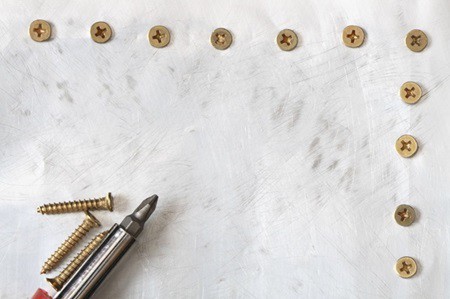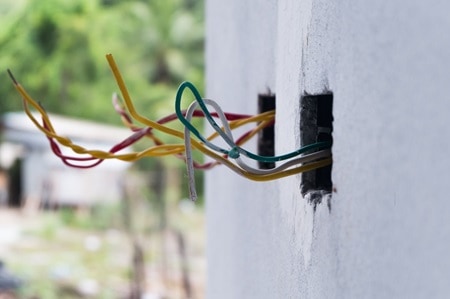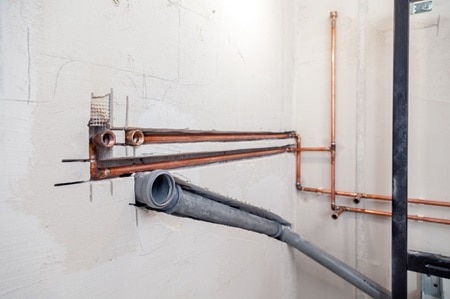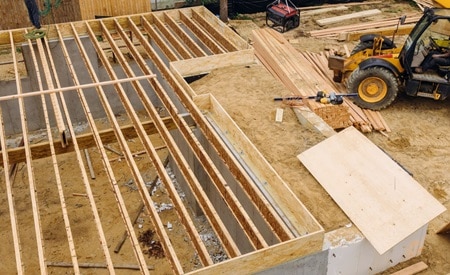What if we told you a stud finder finds more than just studs? This handyman's best friend is much like a superhero with x-ray vision, only instead of seeing through walls, it senses what lies behind them.
Stud finders, despite their name, can detect not only metal or wooden stud framing but also piping, wiring and even pesky pests residing within your walls!
Let's get into it!
Basics of Stud Finders
Before we unlock the full potential of these marvelous devices, let’s get to grips with the basics first.
The very basics of a stud finder might seem somewhat mystical, but it's actually pretty straightforward! Think of your stud finder like a small handheld radar device. It flushes out hidden items within the walls by identifying changes in density in its scanning area - from hollow spaces to those packed with solid material like wooden studs.
You see, stud finders operate on quite simple principles, yet their job is far from easy.
Think about it - they're essentially reading a book through its cover! And just as different writers use different styles and vocabularies, homes are built using different materials and techniques which makes every wall-reading task unique.
How Many Types of Stud Finder?
Stud finders come in two main variations: magnetic and electronic. With an old-school charm, magnetic stud finders leverage powerful magnets to sniff out metal objects behind walls without needing batteries.
On the other hand, electronic versions use sensors to detect sudden density changes inside the wall revealing not only studs but also potentially hidden dangers such as live wiring.
Making the choice between high tech and low tech depends on your specific needs and comfort level-use.
Are Stud Finders Metal Detectors?
To put it simply, yes and no!
Though they might seem similar in their functions, stud finders and metal detectors serve different purposes. The niftiness of a stud finder is that it's designed to detect the density changes within walls - helping you pinpoint the solid wood stud amidst the hollow sections.
Metal detectors, on the other hand, are in an entirely different ball field: they're searching out metals buried within ground soil or hidden under your couch cushions.
Understanding these differences not only avoids confusion but also ensures you pick up the right tool for your task.
Can Stud Finder Detect Metal Objects?
The short answer is 'yes', stud finders can indeed detect metal objects. Now how's that for a plot twist? These nifty little devices don't just limit their skills to finding wooden studs behind your walls; they are also capable of highlighting the location of hidden metals.

This feature comes handy when you want to avoid screwing into pipes or wires when hanging pictures or mounting TVs. Certain advanced models even differentiates between ferrous (magnetic) and non-ferrous (non-magnetic) metals - quite the tech-savvy tool you have there!
The secret lies in its sensor technology which picks up changes in density behind your walls, be it wood or metal.
However, despite the fact that some stud finders can detect metal objects like nails or screws in your wall studs, don't expect them to help you locate that lost wedding ring in your backyard - that’d be a task for our old friend, the metal detector!
Can Stud Finder Detect Wires in Walls?
Our handy little friend the stud finder can do more than just locate studs! They've got a special talent for spotting electrical wires hidden behind your walls too.

Remarkable, isn't it? This is because stud finders are designed to sense changes in density within the wall, and metal wires certainly count as a change.
If you're planning some DIY renovations and worry about accidentally drilling into a live wire - trust me, nobody wants that kind of shock – employing a stud finder can be your safety lifeline.
It's important to remember though, while they're great at detecting wires parallel to the surface, wires that go deep may still be unreachable by these devices. Better safe than sorry is the rule here!
Can Stud Finder Detect Pipes and Ductwork?
Yes, indeed, a stud finder can serve as your secret weapon in avoiding water or gas pipe mishaps during your DIY projects.

Many high-quality stud finders are equipped with metal sensing abilities that help them detect copper or steel pipes hidden behind walls. They may also pick up on HVAC ducts made of thin sheet metal, adding another layer of precaution for your renovation ventures.
However, bear this in mind - not all stud finders have these advanced detection features! Make sure you're using a model designed to catch the presence of pipes and ductwork to avoid any costly surprises. An upgrade could be worth its weight in gold when it comes to future-proofing your home improvement tasks!
Can Stud Finder Find Floor Joists?
The fact is, your stud finder can detect floor joists! While mostly used to locate wall studs, these ingenious devices are also quite capable of helping you find those hidden beams under your flooring.

So, if you're planning on installing heavy furniture or appliances and want to ensure they're properly supported, a stud finder should be in your toolbox.
Floor joists are essentially the 'studs' of your flooring—their job being offering structural support just like their vertical counterparts in the walls. With the use of a stud finder, identifying them becomes less guesswork and more science. Simply move the device slowly across your floor and wait for it to indicate beam location—it's like magic but real-world tech!
Finding Inconsistent Wall Density
One of the lesser-known abilities of a stud finder is its ability to discover inconsistent wall density, something that's typically overlooked in many home inspections.
These spots of varying thickness can sometimes indicate hidden problems like molds or mildewing – these nuisances tend to eat away at your drywall, reducing its overall solidity.
Fortunately, with a little help from our trusty friend, the stud finder, you'd be surprised at what you might find hidden within your walls. Not only does it give you invaluable insight into the construction and layout of your home, but also enables early detection and treatment for potential issues that can save both time and costly repairs down the line.
Some Final Words
Let's give it up for stud finders! These handy devices are, undoubtedly, the unsung heroes in our tool arsenal. Beyond their run-of-the-mill job of tracking down wall studs, they show an impressive range of versatility, detecting not only metal and live wires but also PVC pipes and even termite damage.
Yes, you heard that right! Some higher-end models have specialized sensors that can pick on minor inconsistencies within your walls.
So next time you're armed with a stud finder, remember - this is not just about infrastructure; it represents empowerment, spy-level intelligence gathering, and home care at its finest! Your stud finder is more than meets the eye; it's a gatekeeper to the secrets lying hidden within your walls.
